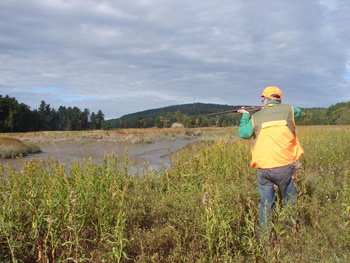Snipe-rail
The Schnepf Rail ( Capellirallus Karamu ) is an extinct, flightless Rallenart that was endemic to the North Island of New Zealand. The specific epithet is derived from the approximately 21 km from Hamilton located Karamu Cave, where in 1954 the type material was discovered.
Features
The Schnepf Rail was a relatively small Rail, which had a very long beak of 7 centimeters in length in comparison to their body size. My weight was about 240 grams. The type material consists of an incomplete skeleton, vertebrae and pelvis. Meanwhile, however, complete skeletons were hundreds of bones found at various places in the North Island. The Schnepf Rail occupies a special position within the New Zealand Rail species. Their evolutionary relationships to other Rail species are unclear, but the condition of the bones suggests that it was closely related to the extinct also Chathamralle ( Gallirallus modestus ). Judging by its size, the Schnepf Rail had the smallest wings of all known species Rail. She also had a relatively large tarsometatarsus.
Habitat and behavior
Most bone finds come from the western regions of the North Island, where moist, closed rain forests prevailed. The long beak suggests that they like the Kiwis were similar to searching the ground with their beaks for food.
Extinction
Due to their inability to fly the Schnepf Rail was easy prey for the Pacific rat, which was introduced in the 13th century in New Zealand.










